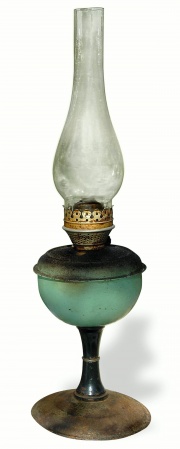Difference between revisions of "Kerosene"
m (Text replace - "== Authority ==" to "== Sources Checked for Data in Record ==") |
|||
| Line 7: | Line 7: | ||
kerosine; paraffin oil (Br.); coal oil; #1 fuel oil; jet fuel; #2 fuel oil; diesel fuel; range oil; stove oil; kerosin (Dan.); Kerosin (Deut.); queroseno (Esp.); kérosène (Fr.); cherosene (It.); kerosine (Ned.); Parafin (Nor.); nafta (Pol.); querosene (Port.); fotogen (Sven.) | kerosine; paraffin oil (Br.); coal oil; #1 fuel oil; jet fuel; #2 fuel oil; diesel fuel; range oil; stove oil; kerosin (Dan.); Kerosin (Deut.); queroseno (Esp.); kérosène (Fr.); cherosene (It.); kerosine (Ned.); Parafin (Nor.); nafta (Pol.); querosene (Port.); fotogen (Sven.) | ||
| + | == Risks == | ||
| − | == | + | * Flammable. Flash point = 38C (100F). |
| + | * Contact causes skin irritation. | ||
| + | * Toxic by inhalation and ingestion. | ||
| + | * Sinclair Oil: [https://www.sinclairoil.com/sites/default/files/MSDS.Fuels_.Kerosene.pdf SDS] | ||
| + | ==Physical and Chemical Properties== | ||
Miscible with other petroleum solvents. Insoluble in water. | Miscible with other petroleum solvents. Insoluble in water. | ||
| Line 18: | Line 23: | ||
|- | |- | ||
! scope="row"| Density | ! scope="row"| Density | ||
| − | | 0.81 | + | | 0.81 g/ml |
|- | |- | ||
! scope="row"| Molecular Weight | ! scope="row"| Molecular Weight | ||
| Line 24: | Line 29: | ||
|- | |- | ||
! scope="row"| Boiling Point | ! scope="row"| Boiling Point | ||
| − | | 175-325 | + | | 175-325 C |
|} | |} | ||
| − | == | + | ==Resources and Citations== |
| − | |||
| − | |||
| − | |||
| − | |||
| − | |||
| − | |||
* Richard S. Lewis, ''Hawley's Condensed Chemical Dictionary'', Van Nostrand Reinhold, New York, 10th ed., 1993 Comment: range=180-300C | * Richard S. Lewis, ''Hawley's Condensed Chemical Dictionary'', Van Nostrand Reinhold, New York, 10th ed., 1993 Comment: range=180-300C | ||
| Line 49: | Line 48: | ||
* ''Dictionary of Building Preservation'', Ward Bucher, ed., John Wiley & Sons, Inc., New York City, 1996 | * ''Dictionary of Building Preservation'', Ward Bucher, ed., John Wiley & Sons, Inc., New York City, 1996 | ||
| − | * Wikipedia | + | * Wikipedia: http://en.wikipedia.org/wiki/Kerosene (Accessed Jan. 15, 2006)- gives range as 150-275C and C12-C15 |
| − | * | + | * CoOL listserve 15Feb2001 Robert Faltermeier '..I came across a protective treatment for archaeological iron. It involves the prolonged immersion of iron into Kerosene. the iron is then coated with Paraloid B-72..' |
[[Category:Materials database]] | [[Category:Materials database]] | ||
Revision as of 13:37, 22 September 2022
Description
A hydrocarbon distillate of Petroleum or shale oil collected from the boiling range of 180-300C. First distilled in the 1840s, kerosene is composed primarily of aliphatic hydrocarbons ranging from C10 to C16. This clear, oily, odorous liquid is used as diesel fuel, jet engine fuel (#1 fuel oil), heating oil (#2 fuel oil), lamp oil, degreaser, cleaning solvent, and as an ineffective thinner for oil paints. It is also used in space heaters, cook stoves, and water heaters. Refined and deodorized kerosene was formerly used as a carrier for some insecticides.
Synonyms and Related Terms
kerosine; paraffin oil (Br.); coal oil; #1 fuel oil; jet fuel; #2 fuel oil; diesel fuel; range oil; stove oil; kerosin (Dan.); Kerosin (Deut.); queroseno (Esp.); kérosène (Fr.); cherosene (It.); kerosine (Ned.); Parafin (Nor.); nafta (Pol.); querosene (Port.); fotogen (Sven.)
Risks
- Flammable. Flash point = 38C (100F).
- Contact causes skin irritation.
- Toxic by inhalation and ingestion.
- Sinclair Oil: SDS
Physical and Chemical Properties
Miscible with other petroleum solvents. Insoluble in water.
| CAS | 8008-20-6 |
|---|---|
| Density | 0.81 g/ml |
| Molecular Weight | mol. wt. = about 170 |
| Boiling Point | 175-325 C |
Resources and Citations
- Richard S. Lewis, Hawley's Condensed Chemical Dictionary, Van Nostrand Reinhold, New York, 10th ed., 1993 Comment: range=180-300C
- Ralph Mayer, A Dictionary of Art Terms and Techniques, Harper and Row Publishers, New York, 1969 (also 1945 printing) Comment: range=175 to 325C
- M. Doerner, The Materials of the Artist, Harcourt, Brace & Co., 1934 Comment: range=180-270C
- Reed Kay, The Painter's Guide To Studio Methods and Materials, Prentice-Hall, Inc., Englewood Cliffs, NJ, 1983 Comment: range=180-285C
- Michael McCann, Artist Beware, Watson-Guptill Publications, New York City, 1979
- George Savage, Art and Antique Restorer's Handbook, Rockliff Publishing Corp, London, 1954
- Dictionary of Building Preservation, Ward Bucher, ed., John Wiley & Sons, Inc., New York City, 1996
- Wikipedia: http://en.wikipedia.org/wiki/Kerosene (Accessed Jan. 15, 2006)- gives range as 150-275C and C12-C15
- CoOL listserve 15Feb2001 Robert Faltermeier '..I came across a protective treatment for archaeological iron. It involves the prolonged immersion of iron into Kerosene. the iron is then coated with Paraloid B-72..'
